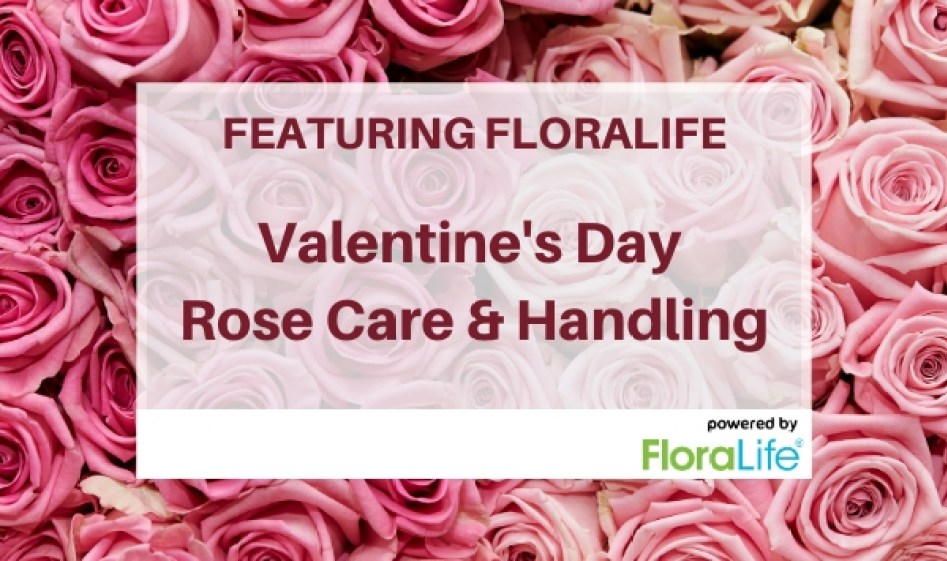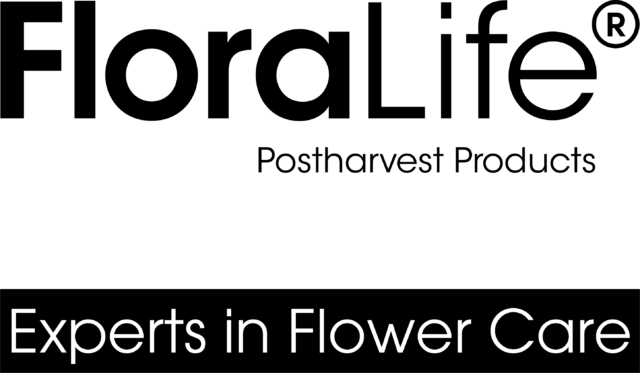More Valentine’s Care & Handling Tips!
It’s a Valentine’s Day flower truth that bears repeating: the long and bumpy road from farm to home can get longer and bumpier this time of year as the supply chain scrambles to meet demand. So the typical care and handling steps you apply to your roses are that much more important! That’s the gist of our latest article for Floriology, the aptly named “Valentine’s Day Rose Care and Handling.”

Good temperature management: Proper temperature control is critical to overall flower quality. Low temps and high humidity in your cooler help minimize water loss and maximize vase life. If you process flowers outside of your cooler, be sure to limit the time flowers spend outside of their ideal storing temperatures. And that ideal is 34 to 38 F (1-3 C), with 75 to 85% relative humidity.
Growers: At the proper harvesting stage, growers begin the process by following proper sanitation, hydration, and controlling ethylene and pathogens. Roses leaving farms should be packaged in a transport paper (such as FloraLife® Transport Paper).
Bouquet Operations: Bouquet operations sometimes provide “value added” processes such as wet packing bouquets or manufacturing pre-made arrangements. The cold chain must be maintained and flowers properly conditioned for storage and transport. An ethylene action inhibitor (such as EthylBloc™ Truck Kit) with shipments is a must.
Retail: Retail is the most important step of the Valentine rose’s journey. By the time roses reach the store, they have likely been harvested and stored for longer than they are used to. This is when they need the most attention, including:
Disease prevention: To prevent diseases like Botrytis:
- Manage temperature with little or no fluctuation.
- Properly sanitize tools, surfaces, etc.
- Gently remove grower packaging from bunches when unpacking boxes.
- Avoid getting flower blooms wet.
- Don’t touch or handle flowers by their blooms.
- Don’t drop or throw flower boxes to prevent physical damage.
- Make sure your supplier has treated your flowers with an ethylene action inhibitor.
- Make sure that the cooler humidity is not too high (anything over 90% humidity encourages diseases).
Sanitation: Clean and sanitize your buckets, tools, work surfaces, cooler walls, floors and shelves with a floral cleaner (such as Floralife® Floral Cleaner or D.C.D.® Cleaner). These cleaners are more effective than bleach, as they have a residual effect that lasts for days after treatment.
Hydrate & Nourish: When they reach your store, roses need proper hydration and nourishment, especially when received dry pack. For best results, use FloraLife® Quick Dip to jump-start hydration and ensure free-flowing stems. Re-cut flower stems approximately 1 inch. Place stems immediately after fresh cut into water prepared with flower food such as FloraLife® Express. Use a dosing unit that is properly calibrated, or hand mix the solution according to label instructions.
Protect: A professional finishing spray like FloraLife® Finishing Touch or FloraLife® Crowning Glory® will help refresh, hydrate, and protect your flowers.
Customer care: Your customer looks to you as the flower expert, so offer lots of advice on the steps they should follow at home. Make sure they don’t place flowers in direct sunlight, extreme heat, cold or drafts. Give them flower food packets with every purchase or delivery and advise them on proper use. And give them extra packets to last for the flowers’ entire vase life.
So that’s the drill! If you keep those roses fresh while they are in your care, and show your customer how to do the same, you can give your customers an amazing experience and have them coming all year long! Check out the original article in Floriology, and for further floral care and handling advice, visit www.FloraLife.com!
